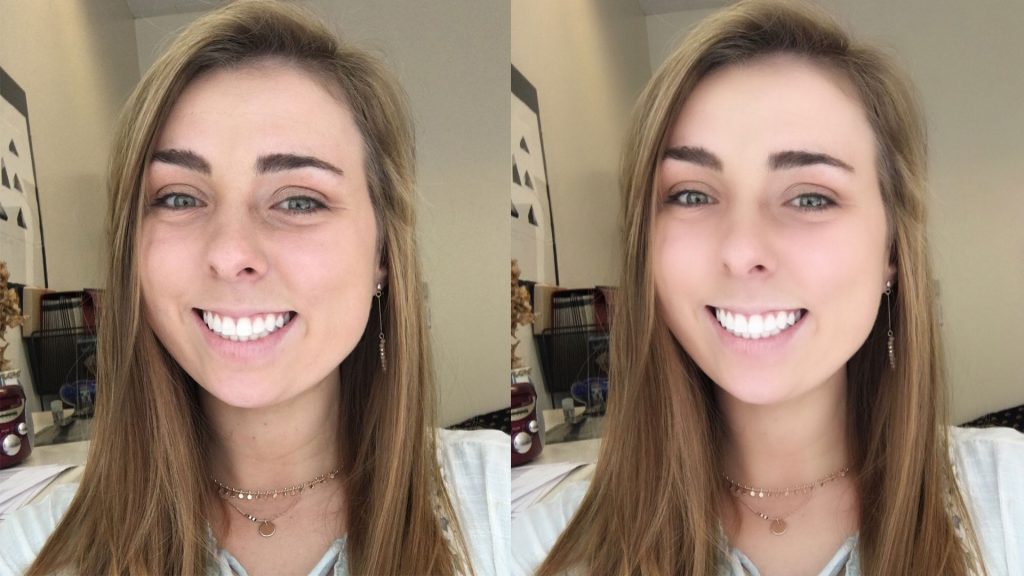
Blurred lines: Healthy body image in the era of photo filters

It’s natural for people to assume the airbrushed and flawless photos on advertisements have been digitally manipulated, but what about pictures on their social media feeds? The widespread use of selfie editing apps has caused the look of filtered and edited photos to be the new normal for social media posts. The constant barrage of filtered photos on social media has the potential to lead to an unhealthy body image and a cycle of destructive self-comparison.
In the pre-smartphone days, unrealistic and doctored photos were often seen in magazines and advertisements. Models and celebrities were airbrushed and filtered into the picture of perfection by professionals with retouching, airbrushing or digital editing software. Today, having a picture-perfect selfie is no longer a luxury reserved for only the rich and famous. Anyone who owns a smartphone can download a photo editing app and start snapping away.
Photo editing apps like Facetune take the complexity out of photo retouching and give smartphone users the ability to whiten teeth, brighten eyes and smooth complexions. Facetune has become increasingly more popular since its launch in 2013, and it’s become the top-selling paid app in the App Store for iOS. It’s often difficult to find a selfie on Instagram that hasn’t been Facetuned or, at the very least, manipulated in some form.
Selfie editing apps give users the ability to enhance features they want to show off, like the color of their eyes, or the ability to eliminate unwanted features such as eyebags or skin texture. Facetune goes beyond just simple color adjustments, it allows users to contour face structure and morph the shape of their body. The effect can be subtle, such as tightening a jawline, or extreme like widening the hips and making a waistline smaller.
The effects of beauty filters are illusionary, of course, unless the user’s friends and family never see them in person again. If the only photos seen on social media are edited and smoothed, at what point does the viewer start to forget what an actual human face is supposed to look like?
Often users don’t even need to download a third-party app to be able to get the beauty filter effects. Samsung Galaxy phones come pre-equipped with a “beauty mode” that’s advertised to “bring out your best features” and smooths skin automatically. Apple was recently in hot water with iPhone users for what appeared to be an automatic beauty filter on the front-facing camera of the iPhone XS.
Features like beauty mode are starting to become the standard for taking selfies. The problem is that it can make a “normal” photo taken on the front-facing camera look unappealing in comparison and can cause viewers to start over-analyzing their appearance.
Boston Medical Researchers argue that increased use of beauty filters alter the viewer’s perception of beauty and can trigger body dysmorphic disorder (BDD) and feelings of low self-esteem. Constantly seeing perfectly edited photos from friends on social media can create an expectation to look perfect at all times that isn’t realistic or healthy.
Body positivity is the trend of the decade with many brands like Dove and Aerie marketing “realistic” portrayals of models who reflect the size of the average American woman. Their ads emphasize the lack of manipulative editing on their models and the trend has been a refreshing change to the usual airbrushed look that viewers have grown accustomed to.
Body positivity shouldn’t be limited to just weight but should also include the authentic appearance of the face. Editing apps can cause the viewer to micro-analyze every part of their face down to the smallest detail to achieve an unrealistic idea of a perfect appearance.
Trends come and go, especially with social media. Many may recall the infamous “Myspace angle” in the 2000s. The angle involves taking a selfie from a strange angle to obscure any bodily flaws with a digital camera.
Hopefully, the trend of erasing every single pore from the skin and digitally chiseling jawlines to resemble a Kardashian will be as temporary as bathroom mirror selfies that future generations can look back and have a laugh at.
It’s human nature to want to portray one’s self in the most flattering way to the online world. There’s nothing inherently wrong with editing a zit off of a selfie or whitening teeth before uploading a picture to Instagram, but don’t lose touch with reality along the way. The standard for what’s considered beautiful will always change, and it’s impossible to keep up with constantly changing trends. It’s time to embrace the imperfections that make us human and embrace the #nofilter look of life.

For more information on healthy lifestyles
LIST: Healthy meal prepping ideas on a budget
Everyone longs to be healthy and happy. There are people who feel as if living a healthy lifestyle is feeling forced to live a structured regimented lifestyle, but really it’s all about finding a balance with food and happiness.
VIDEO: UHCL personal trainer offers tips for effective physical activity
How does someone who is not familiar with the fitness world get involved? And, how can they adjust their life in order to get the most out of their physical activity? UHCL Personal Trainer Jonathan Vordenbaum offers some answers.
